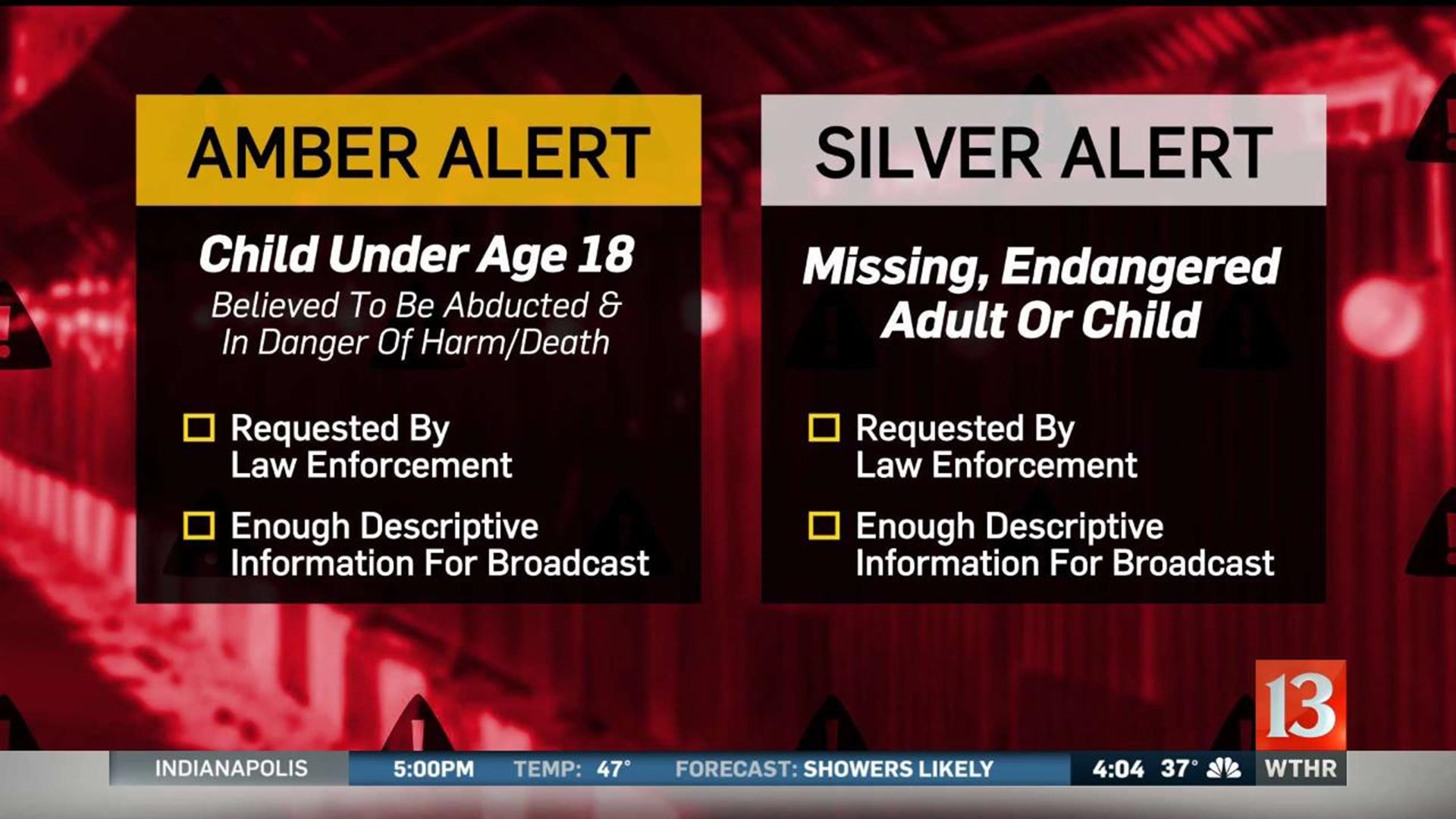Understanding Amber Alert Systems
Amber Alerts are a vital tool in the fight against child abduction, but their implementation varies significantly across different geographical regions. Understanding these variations is crucial to appreciating their effectiveness and potential for improvement. This section will explore the nuances of Amber Alert systems, focusing on geographical differences, activation criteria, dissemination technologies, and a comparison with other emergency alert systems.
Geographical Variations in Amber Alert Systems
The Amber Alert system, while sharing a common goal, is not uniformly implemented across states within the United States or internationally. Each state possesses its own activation criteria, communication protocols, and participating agencies. For instance, some states may have stricter criteria for issuing an alert, requiring a higher level of certainty regarding the abduction, while others may have a broader definition of what constitutes a qualifying abduction. Internationally, the variations are even more pronounced. Many countries have their own child abduction alert systems, which may operate independently or through collaborations with neighboring nations. These systems may utilize different technologies, have varying levels of public awareness, and be subject to different legal frameworks. The level of integration between these systems also varies considerably, potentially hindering cross-border cooperation in cases of international abductions.
Criteria for Activating an Amber Alert
The criteria for activating an Amber Alert differ depending on the jurisdiction. Generally, law enforcement must confirm that a child abduction has occurred, that the child is believed to be in imminent danger, and that there is sufficient descriptive information to assist in the search. This information typically includes the child’s age, description, the suspect’s description (if known), and the vehicle involved. However, the specific requirements for each element can vary. Some jurisdictions may require a confirmed sighting of the suspect and child, while others may rely on circumstantial evidence to justify the issuance of an alert. The age of the child may also be a factor, with some jurisdictions prioritizing alerts for younger children. Furthermore, the severity of the perceived danger is a critical factor. For example, a child who has been abducted by a non-custodial parent may not trigger an Amber Alert, unlike a situation involving a stranger abduction with evidence of violence.
Technologies Used to Disseminate Amber Alerts
Amber Alerts are disseminated through a variety of technologies, each with its own strengths and weaknesses. Traditional media outlets such as television and radio remain crucial, providing broad reach and immediate impact. However, the increasing prevalence of cell phones has led to the widespread adoption of Wireless Emergency Alerts (WEA), which deliver alerts directly to compatible mobile devices. Social media platforms such as Twitter and Facebook are also utilized, allowing for rapid dissemination of information and wider public engagement. Each method has its limitations; television and radio may not reach everyone, particularly those who do not have access to these media. WEA may not reach everyone with a cell phone (older models, international visitors, etc.). Social media can be prone to misinformation and the spread of false information. Therefore, a multi-platform approach is typically used to maximize reach and impact.
Comparison of Amber Alerts and Other Emergency Alerts
| Feature | Amber Alert | Emergency Alert System (EAS) | Wireless Emergency Alerts (WEA) |
|---|---|---|---|
| Purpose | Child abduction | Broad range of emergencies (natural disasters, AMBER alerts, etc.) | Imminent threats (severe weather, AMBER alerts, etc.) |
| Trigger | Confirmed child abduction, imminent danger | Presidential directives, national emergencies, state/local emergencies | Specific criteria defined by authorities |
| Dissemination | TV, radio, WEA, social media | TV, radio | Wireless mobile devices |
| Geographic Scope | State or regional | National or regional | Geographic area determined by cell tower coverage |
Data Sources for Active Amber Alerts: How Many Active Amber Alerts Are There

Obtaining real-time data on active Amber Alerts requires understanding the various sources available and their inherent limitations. The decentralized nature of the Amber Alert system, coupled with the urgent and rapidly evolving circumstances surrounding each case, presents significant challenges in achieving perfectly up-to-the-minute accuracy.
The primary challenge lies in the fact that Amber Alerts are issued and managed at a state or local level. There isn’t a single, centralized national database that provides a continuously updated list of every active alert across the country. This decentralized structure, while allowing for rapid response to individual cases, complicates the effort to create a comprehensive, real-time feed of active alerts.
Primary Official Sources of Real-Time Amber Alert Information
Several official sources provide information on active Amber Alerts, although none offer a completely unified, real-time view. These sources often rely on individual state or local law enforcement agencies to input and update information. Delays can occur due to the urgency of the situation, resource constraints, and variations in reporting protocols. Key sources include state-specific Amber Alert websites, and in some cases, the websites of participating law enforcement agencies. Many news organizations also provide Amber Alert information, often drawing from these official sources, but their speed and accuracy can vary.
Limitations and Challenges in Accessing Up-to-the-Minute Data
Accessing completely up-to-the-minute data on active Amber Alerts is inherently difficult. The time-sensitive nature of these alerts means that information changes rapidly. Furthermore, not all agencies may utilize the same technology or reporting systems, leading to inconsistencies in data updates. Technical issues, such as website outages or delays in data transmission, can also affect the timeliness of information. Finally, the privacy concerns surrounding Amber Alert cases necessitate careful consideration of information released to the public.
Potential Biases or Inaccuracies in Publicly Available Amber Alert Data, How many active amber alerts are there
While official sources strive for accuracy, biases and inaccuracies can still occur. Human error in data entry, for example, is a possibility. The urgency of the situation can also lead to the dissemination of preliminary information that may later need correction. Moreover, the information presented might be incomplete or filtered to protect the investigation or the privacy of those involved. News media outlets, while generally reliable, may also interpret or present information differently, potentially leading to variations in the public understanding of an active alert.
Potential Data Sources Categorized by Reliability and Accessibility
Below is a list categorizing potential data sources based on their reliability and accessibility.
How many active amber alerts are there – High Reliability and Accessibility:
- State-specific Amber Alert websites (reliability varies by state, but generally high for official sources).
- Websites of major news organizations that actively track and report on Amber Alerts (reliability varies by organization).
Moderate Reliability and Accessibility:
- Local law enforcement agency websites (accessibility varies greatly, reliability generally high for official sources).
- Social media (reliability is low; information should be verified through official channels).
Low Reliability and Accessibility:
- Unofficial websites or blogs (reliability is extremely low; information should be treated with extreme skepticism).
Visualizing Active Amber Alert Data

Effective visualization is crucial for understanding the complex dynamics of Amber Alerts. By representing the data geographically and temporally, we can gain valuable insights into alert frequency, geographic distribution, and overall trends. This allows for a more comprehensive understanding of the system’s effectiveness and potential areas for improvement.
Geographic Visualization of Active Amber Alerts
A map-based visualization would effectively display the current number of active Amber Alerts across a geographical area. The map could be an interactive, zoomable United States map, for example. Each state, or even county, could be color-coded based on the number of active alerts within its boundaries. A legend would clearly indicate the color scale, showing the range from zero active alerts (light green, for instance) to a high number of active alerts (dark red). The map could also include clickable markers for each active alert, providing details such as the time the alert was issued, the child’s description, and the suspected vehicle involved upon clicking. This allows users to quickly identify areas with a high concentration of active alerts and access specific details about each case.
Historical Trends in Active Amber Alerts
A line graph would be suitable for illustrating the historical trends in the number of active Amber Alerts over time. The x-axis would represent time (daily, monthly, or yearly, depending on the granularity of the data), and the y-axis would represent the number of active alerts. Data points would represent the total number of active alerts on each specific day, month, or year. The line connecting these points would visually demonstrate the fluctuations in the number of alerts over the chosen time period. Seasonal trends or other patterns could be easily identified. For example, a spike in the number of alerts during the summer months might indicate a correlation with increased outdoor activities. Including a second line showing the average number of active alerts per period could help to highlight significant deviations from the norm.
Comparative Visualization Methods
Different visualization methods offer unique perspectives on active Amber Alert data. The map, as described previously, provides a spatial understanding of where alerts are concentrated. The line graph offers a temporal view, showing how the number of alerts changes over time. A bar chart, for instance, could be used to compare the number of active alerts across different states or regions over a specific period. This would allow for direct comparison of alert frequencies across geographical locations. Combining these different visualization techniques provides a more complete and nuanced understanding of the Amber Alert system’s performance and distribution of cases.
Factors Influencing the Number of Active Alerts

The number of active Amber Alerts at any given time is not static; it fluctuates based on a complex interplay of various factors. Understanding these influences is crucial for evaluating the effectiveness of the system and for resource allocation within law enforcement agencies. Several key elements contribute to the variability observed in the number of active alerts.
Several events and circumstances significantly impact the number of active Amber Alerts. These factors range from societal trends to the effectiveness of law enforcement strategies.
Events and Circumstances Affecting Amber Alert Frequency
Increased crime rates, particularly those involving child abduction, directly correlate with a higher number of active alerts. Conversely, periods with lower crime rates naturally result in fewer alerts. For example, a significant increase in reported kidnappings within a specific region during a particular time frame would lead to a surge in active Amber Alerts in that area. Conversely, a decrease in such crimes would result in fewer alerts. Natural disasters or other large-scale emergencies can also temporarily influence the number of alerts, either by diverting resources away from investigations or by creating circumstances that increase the risk of child abduction. Periods of heightened social unrest or instability might also see a rise in the number of alerts issued.
Media Coverage and Public Awareness
The role of media coverage and public awareness is multifaceted. Increased media attention to Amber Alerts can raise public awareness, potentially leading to more reports of suspected abductions. This increased reporting could result in more Amber Alerts being issued, even if the actual number of abductions remains relatively constant. Conversely, overly sensationalized or inaccurate reporting could lead to public fatigue or skepticism, potentially reducing the effectiveness of the system and decreasing the number of alerts. The impact of a widely publicized successful Amber Alert resolution, for example, might temporarily increase public trust and reporting, while a case that ends tragically might lead to a temporary decline in public engagement.
Demographic Variations in Amber Alert Frequency
While data on Amber Alert frequency across various demographics is not consistently tracked nationally, regional variations exist. Certain geographic areas may experience higher rates of child abduction than others, leading to a greater number of active alerts. Factors such as socioeconomic disparities, population density, and access to resources could contribute to these regional differences. Further research is needed to analyze demographic trends, particularly related to age, gender, and socioeconomic status, to fully understand their influence on Amber Alert frequency. Gathering and analyzing such data requires careful consideration of privacy and ethical implications.
Law Enforcement Practices and Amber Alert Issuance
Law enforcement agencies play a crucial role in determining when an Amber Alert is issued. Variations in agency policies, training, and investigative protocols can impact the number of alerts issued. Stricter criteria for issuing an Amber Alert might lead to fewer alerts being issued overall, while more lenient criteria could result in a higher number. Similarly, differences in the speed and efficiency of investigations can influence how quickly alerts are issued and subsequently canceled, affecting the number of active alerts at any given time. The level of inter-agency cooperation and information sharing also significantly impacts the overall efficiency and effectiveness of the system.
Ethical Considerations and Public Perception
The widespread dissemination of Amber Alerts, while intended to save children’s lives, raises several ethical considerations and significantly impacts public perception. The balance between maximizing the chances of a successful recovery and minimizing potential negative consequences requires careful examination. This includes considering the potential for misuse, the impact on public trust, and the emotional toll on both families involved and the broader community.
The effectiveness of Amber Alerts hinges on public engagement and trust. However, several factors can erode this trust, ultimately hindering the system’s ability to achieve its goals.
Amber Alert Fatigue and Diminished Response
Overuse or inappropriate use of Amber Alerts can lead to “alert fatigue,” a phenomenon where the public becomes desensitized to the alerts and less likely to respond. This can happen when alerts are issued for situations that do not meet the criteria for an Amber Alert or when alerts are issued for cases that are later found to be unfounded. The result is a decreased public response to legitimate alerts, potentially jeopardizing the safety of missing children. For example, if a community receives numerous false or inappropriate alerts, residents might begin ignoring future alerts, even those involving genuine emergencies. This diminished response directly impacts the effectiveness of the system.
Public Perception of Amber Alert Effectiveness and Reporting
Public perception of Amber Alert effectiveness significantly influences reporting behavior. If the public believes Amber Alerts are rarely successful or are frequently misused, they may be less likely to report missing children promptly, thereby reducing the chances of a timely and successful recovery. Conversely, positive experiences and successful outcomes associated with Amber Alerts can foster greater public trust and encourage prompt reporting. The perception of effectiveness, therefore, creates a feedback loop, influencing both reporting and response rates.
Recommendations for Improving Public Understanding and Engagement with Amber Alerts
Improving public understanding and engagement requires a multifaceted approach. A well-informed public is crucial for the success of Amber Alerts.
- Enhance Transparency and Accountability: Clearly define the criteria for issuing an Amber Alert and make this information readily accessible to the public. Regularly publish data on the success rate of Amber Alerts and provide explanations for cases where alerts were issued but did not lead to a successful recovery. This transparency helps build public trust and reduces the potential for misuse.
- Improve Alert Targeting and Dissemination: Utilize geographic targeting and other advanced technologies to ensure that alerts are received only by those in areas directly relevant to the missing child. This reduces alert fatigue and increases the likelihood that relevant individuals will see and respond to the alert.
- Public Education Campaigns: Launch regular public awareness campaigns to educate the public about the criteria for Amber Alerts, how to respond to them, and the importance of reporting missing children promptly. These campaigns should be designed to counter alert fatigue and reinforce the importance of the system.
- Feedback Mechanisms: Establish clear channels for public feedback on the Amber Alert system. This allows for the collection of valuable insights and improvements based on real-world experiences.
FAQ
What is the difference between an Amber Alert and a Blue Alert?
Amber Alerts are for abducted children, while Blue Alerts are for officers who are injured or killed in the line of duty.
How are Amber Alerts cancelled?
Alerts are cancelled once the child is found safe or the situation is resolved. Law enforcement issues the cancellation.
Can I receive Amber Alerts if I don’t have a smartphone?
Yes, many Amber Alerts are broadcast via radio and television. However, smartphone alerts are becoming increasingly common.
Are Amber Alerts issued for every missing child?
No. Specific criteria must be met, such as the belief the child is in imminent danger and sufficient information for a public appeal.
What if I think I’ve seen a child matching an Amber Alert description?
Immediately contact law enforcement. Do not approach the child or the suspected abductor. Provide details of the location and any identifying features.